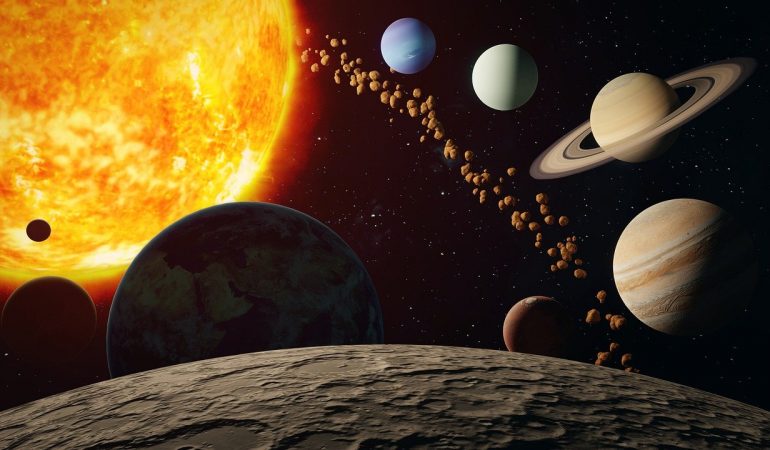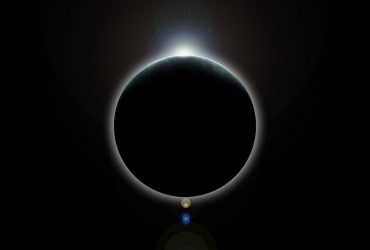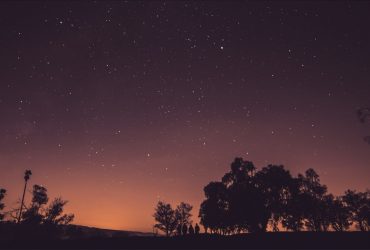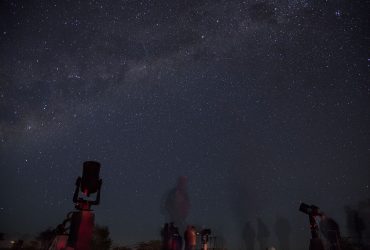Which Planets Are Visible Without A Telescope?
While a telescope can open your eyes to many celestial wonders, your naked eyes are not completely helpless when observing the night sky.
In addition to the usual objects – the moon and stars – you can also see a decent number of planets without a telescope or a pair of binoculars.
All you need to know is when to look for a particular planet, where in the sky to look for it, and how to identify it.
Which Planets Are Visible With Naked Eyes?

For practical purposes, there are five planets that are visible with naked eyes.
I say that because the sixth planet, Uranus, is anything but practical for most people to view.
Being very dim, it is barely visible in the night sky and requires an exceptionally clear night away from artificial light sources to see.
The five planets that are easily visible without a telescope are Mercury, Venus, Mars, Jupiter and Saturn.
Mercury is the hardest planet to spot because of its proximity to the sun. It’s often lost in the glare of sunrises and sunsets.
The other four planets are fairly bright and are easy to spot, especially if you time for when they appear brightest in the sky.
Where to Find Planets in the Sky
Apart from the moon, everything else in the night sky tends to look like a point of light. But if you look closely, there’s a crucial difference between the billions of stars and the one planet you are trying to spot.
Stars twinkle or shimmer, a phenomena caused by the faraway light moving through earth’s atmosphere.
Planets, being much closer, are not affected as much by the atmosphere. Thus, reflected light from planets appears steady.
Still, it’s hard to pick out a steady pinpoint of light from billions of shimmering lights. So you need where in the night sky you should be looking at.
You could use celestial coordinates to find the location of a planet. A simple Google search like ‘Location of Mercury’ will bring up its current coordinates.
But the easiest way to locate a planet is using an online tool like TheSkyLive.com. Search for the planet you want to see, your location and the current time (or the time you’ll be observing it).
The site will display all the information you need (called ephemerides) including the time the planet will set and rise on that day so that you can know whether it’ll be visible at all on that night.
It also shows a celestial map with the location of the planet.
Another helpful tool is TimeandDate.com.
There are plenty of other online tools, charts and maps you can use to find the location of a particular planet. The most important thing is to enter the right information including your location, the date and time of observation.
That’s because the position of planets shifts over time in the sky (because of the movements of the earth and these planets), so planets are not in the same place every night.
How To Identify Planets Without A Telescope?

Once you know where to look, you still need to know what you are looking for. Here’s how different planets appear in the night sky.
1. Mercury
Because it’s so close to the sun, you have to time your Mercury spotting just right. It doesn’t appear in a fully dark sky when the sun is gone, but it also gets drowned out easily by the glare of the setting or rising sun.
The best time to spot it is in the morning just before full sunrise and in the evening immediately after sunset.
As long as there’s clear sky on the horizon, look for a yellowish or golden point of light. It’ll be in the eastern sky in the morning, and the western sky in the evening.
2. Venus
Venus is the brightest object in the night sky after the moon. So it should be easy to spot on a clear night. Just make sure you wait for the time of the year when it’s most visible. Use The Sky Live, Time and Date or some other tool to find the best time.
Venus can be visible in the early mornings or evenings depending on the time of the year. It’ll appear as a bright white object.
Interestingly, Mercury and Venus go through phases as seen from the earth. That’s because they sometimes get between earth and the sun.
Venus is brightest when it’s thinnest in the crescent phase. That’s when it’s closest to the earth.
3. Mars
Mars experiences drastic changes in brightness as it moves closer and further from the earth and sun.
So make sure you time your observations right. Mars is often brightest at the beginning of the year, and slowly fades in brightness as the months progress.
By September, it’s too close to the sun to be seen in the night sky. You can see it again in late November.
When viewing mars with your naked eyes, look for an orange-red object in the sky. Use a sky chart to know exactly where to look for it.
4. Jupiter
During the dimmer days of Mars, Jupiter is the next brightest object in the sky after Venus. While it’s visible for most months of the year, there’s a period when it’s brightest.
In 2021, that was in August and part of September.
Use a sky chart to find the current coordinates of Jupiter, then look for a non-twinkling light tan object.
5. Saturn
No, you can’t see Saturn’s rings with your naked eyes. You need a telescope for that. But you can see the planet in the night sky for most of the year.
Similar to Jupiter, it gets brightest around August.
Once you find the right coordinates for Saturn on the day you plan to spot it, look for a yellowing-tan object.
What About Uranus?
Most people will not be able to spot Uranus in the sky. The planet is on the edge of unaided visibility and requires both good eyesight and clear skies. You also need to be far away from artificial lights.
The best time to see Uranus in 2021 is 4th November when it’ll be in opposition (opposite the sun) and thus at its brightest.
Use a sky chart to find where in the sky to look for it. The video below also gives a nice step by step on how to locate Uranus within the constellation Aries.
For a better viewing experience, a pair of binoculars or a beginner telescope should get you some good views of Uranus. It’ll appear as a blue-green object.



